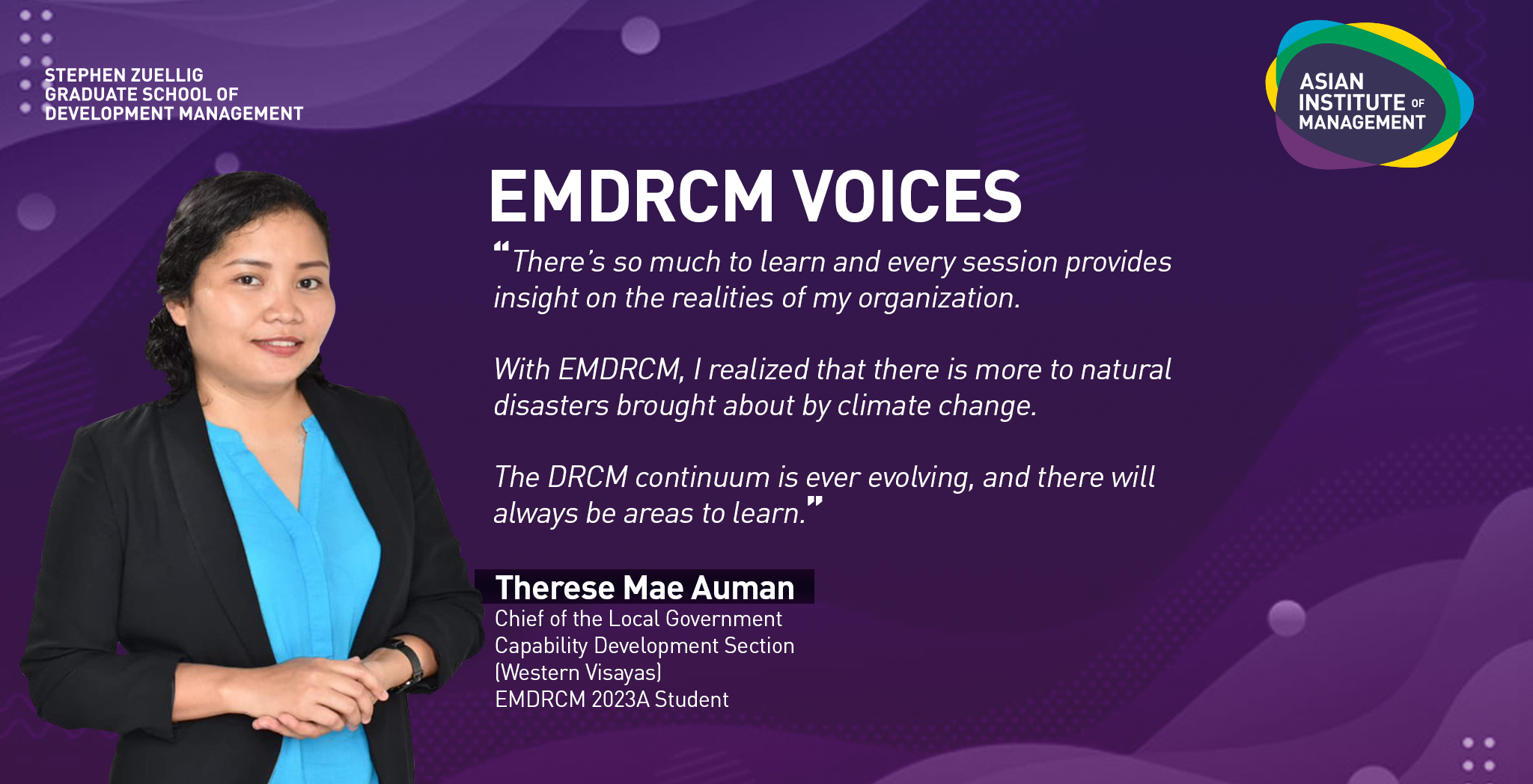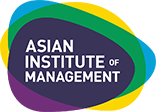As a resident of Pavia in Iloilo, Western Visayas, Therese Mae Auman is no stranger to the destruction often wrought by tropical depressions and cyclones passing through the country. In October 2021, Tropical Depression Lannie flooded 32 barangays across Capiz.[i] In 2019, Leyte and Capiz both declared a state of calamity following Typhoon Ursula, which left 16 dead in its wake.[ii] As the head of the Local Government Capability Development section, she is constantly faced with managing community emergencies and evacuations.
Auman works with the Department of the Interior and Local Government (DILG) Western Visayas stationed at Capiz Provincial Office. Her main responsibilities include spearheading the program in Disaster Risk Reduction Management (DRRM). In 2021, she enrolled in the Executive Master in Disaster Risk and Crisis Management (EMDRCM) degree program at the Asian Institute of Management. “As the Chief, it is imperative that I have an understanding about DRRM in its totality. In that way, I can translate my learnings and apply it to better my work.”
As she progressed in her EMDRCM studies, she noticed patterns emerging in the way local communities responded to severe typhoons and tropical depressions affecting the Western Visayas region. She identified two major areas that were significantly lacking – data banking and community preparedness.
She noticed that local governments struggled to keep data and records on previous disasters in a systemic manner. “Local Government Units in my area of responsibility have no data banking of previous disasters they have experienced, wherein they can easily retrieve and use that information in formulating their local plans,” Auman observed. The lack of data banking increases the possibility for history to repeat itself, with no improvements on mitigating property damage or potential deaths following a community’s experience with destructive storms.
The lack of community preparedness was mainly an issue of communication channels. While communities were briefed and provided with knowledge on evacuating amid unfolding disasters, implementation was a persistent roadblock. There were no strategic systems of evacuation in place to mobilize community members quickly and effectively. “Communities are made aware of the hazards in their area and various drills have already been conducted. However, whenever disaster strikes, everyone still scrambles.”
Auman is currently completing her journey through the EMDRCM program, continuously applying lessons in the classroom to real-life situations at work. This gives her the opportunity to unravel overlaps that will help her decide what to pursue as her capstone project.
The biggest takeaway she has drawn from the program is that disaster risk and crisis management is not limited to natural disasters resulting from climate change. “The DRCM continuum is ever-evolving, it’s a never-ending cycle and there will always be areas to learn,” she shares.
She urges disaster risk and crisis management students and leaders to develop solution-seeking behavior. Having leaders with this mindset opens opportunities to improve our response to multi-faceted challenges.
Students like Auman enroll in the Executive Disaster Risk and Crisis Management program to evolve into leaders and changemakers that can help their countries not only survive disasters but thrive and flourish.
The Executive Master in Disaster Risk and Crisis Management trains students in the multi-sectoral and inter-disciplinary aspects of disaster risk and crisis management. If you would like to learn more about the program, visit devatwork.aim.edu or send an email to admissions@aim.edu.
[i] Perla Lena, “‘Lannie’ drenches Capiz, Iloilo City”, 5 October 2021, https://www.pna.gov.ph/articles/1155680
[ii] CNN Philippines, 26 December 2019, https://cnnphilippines.com/news/2019/12/26/ursula-death-toll.html






